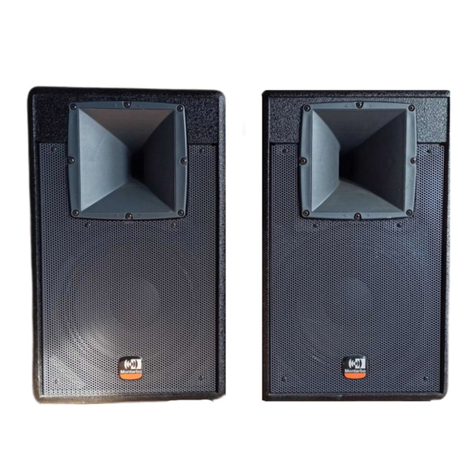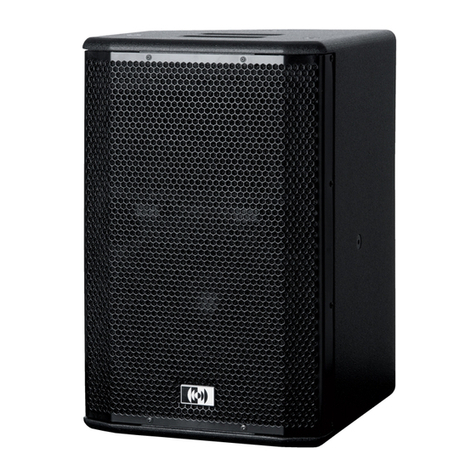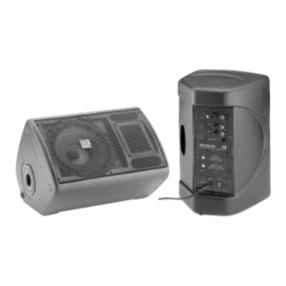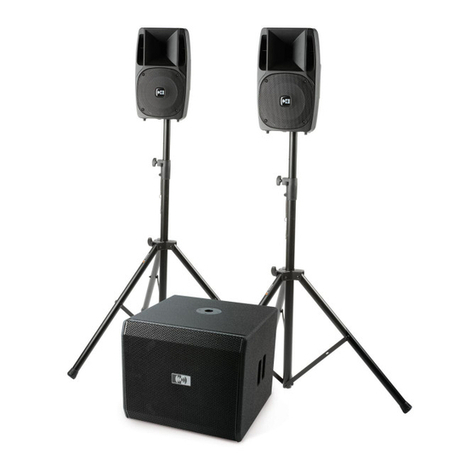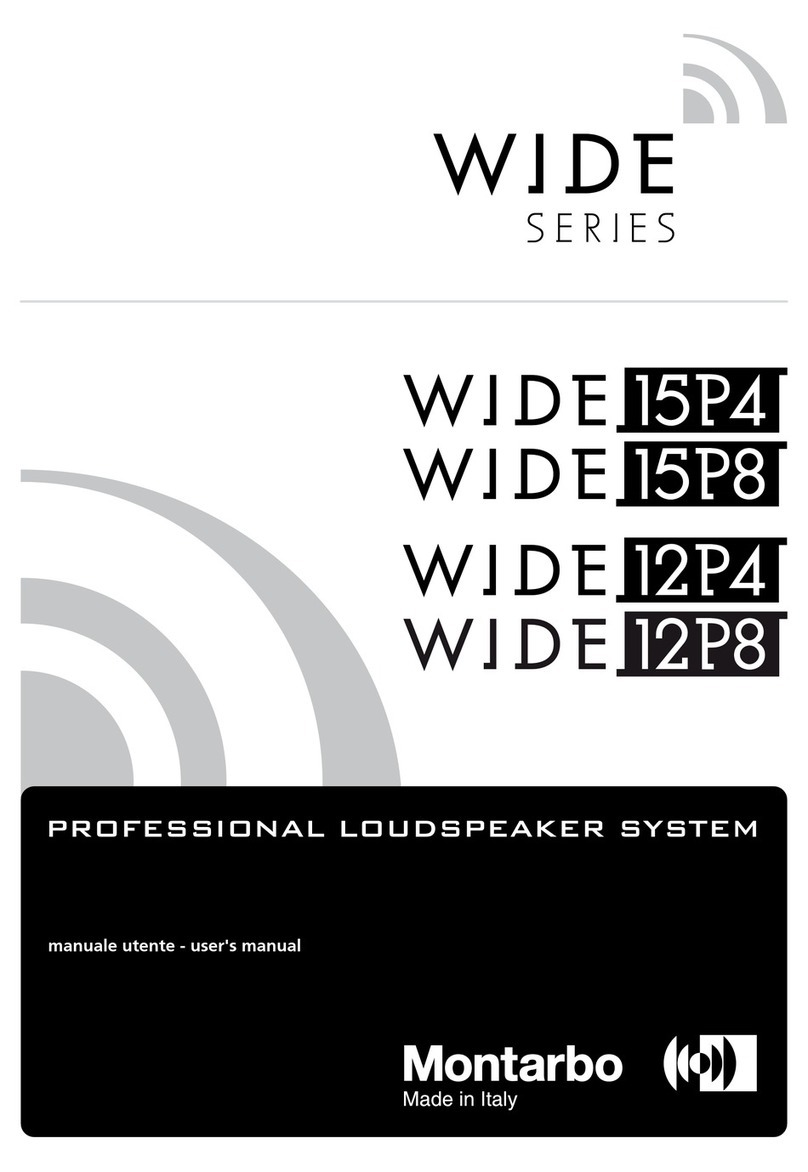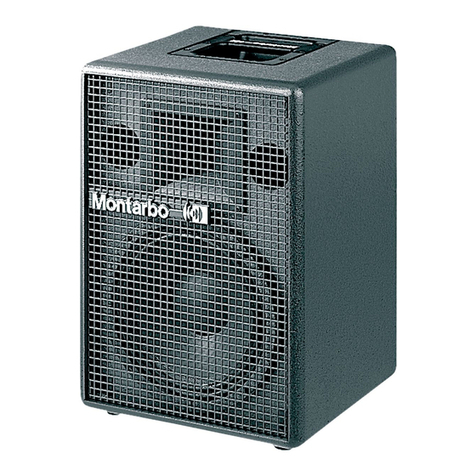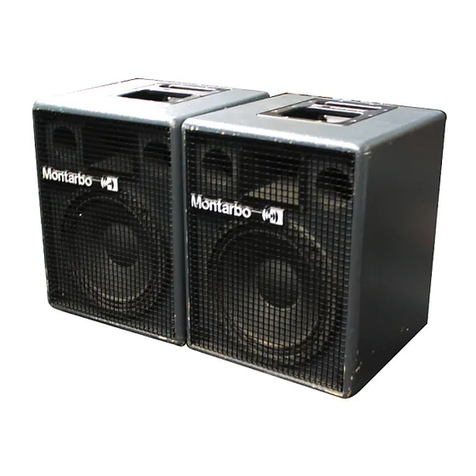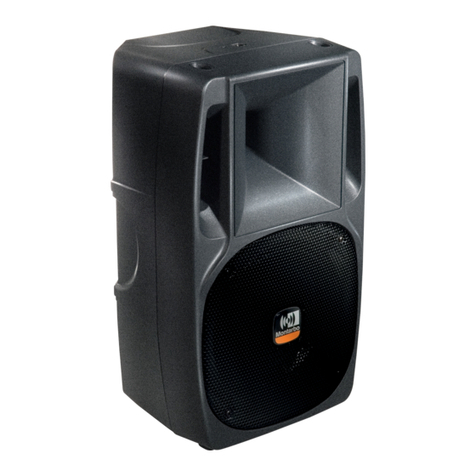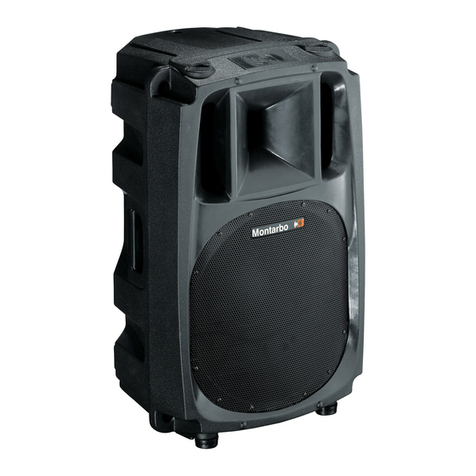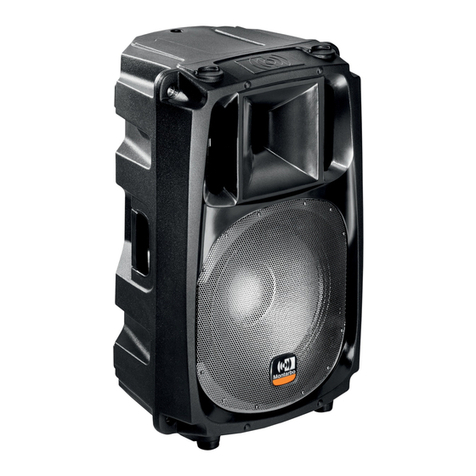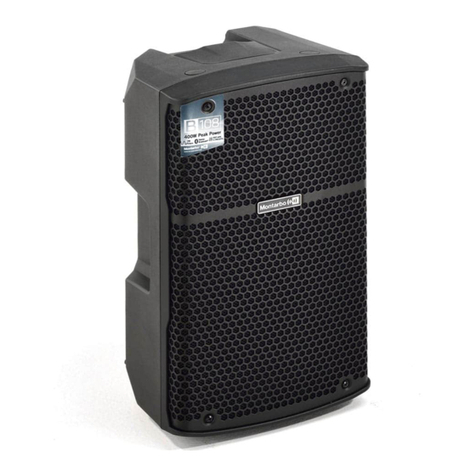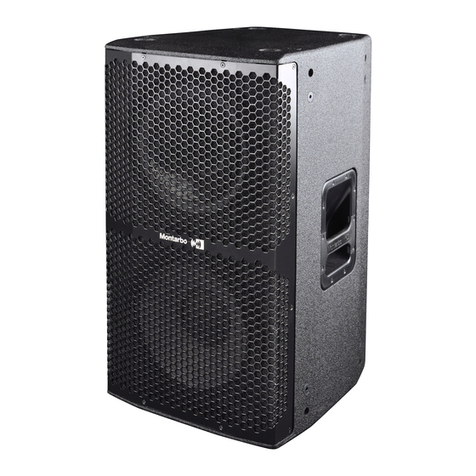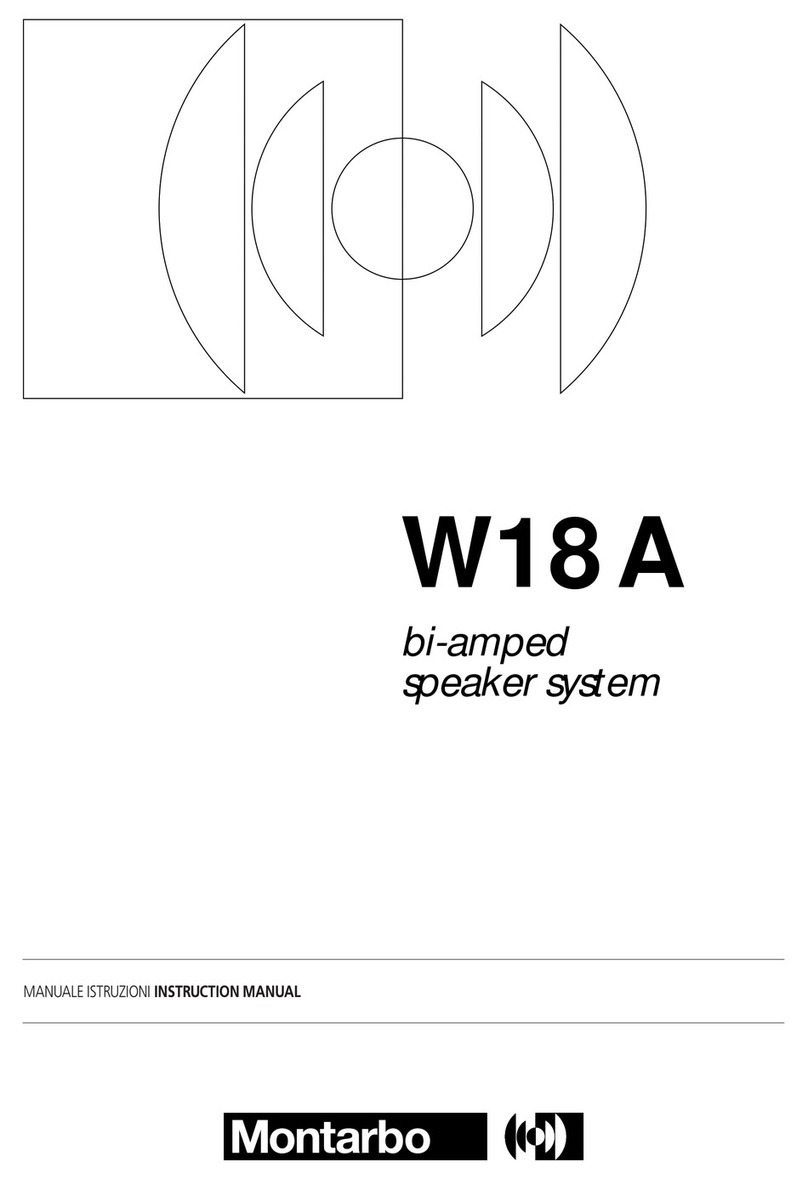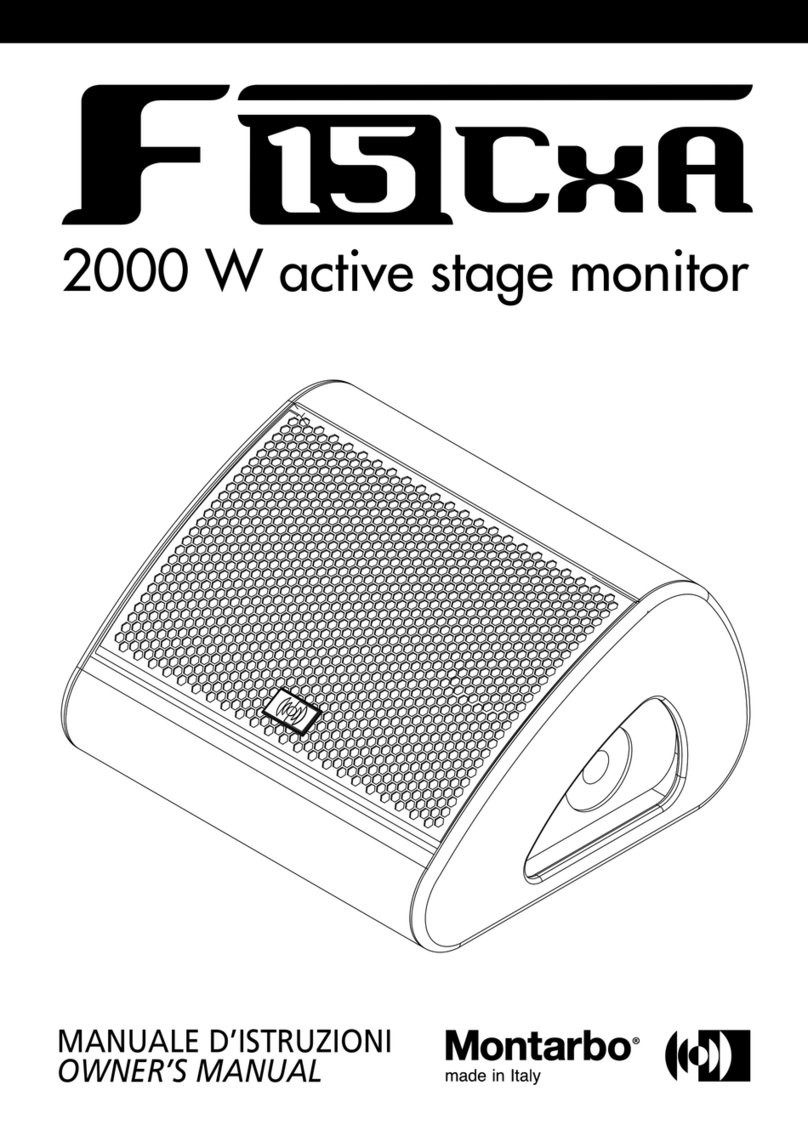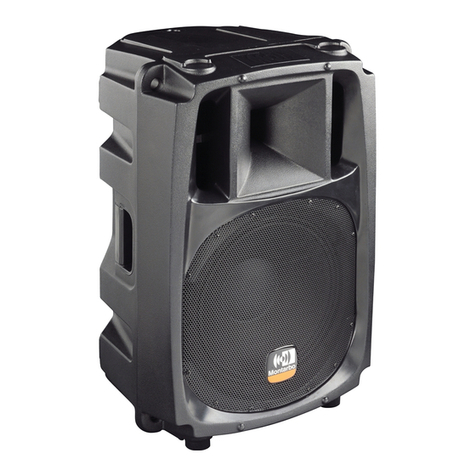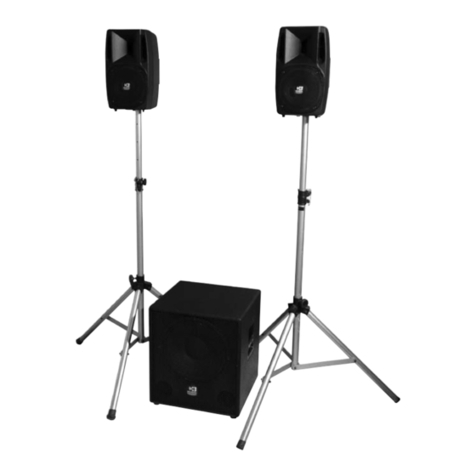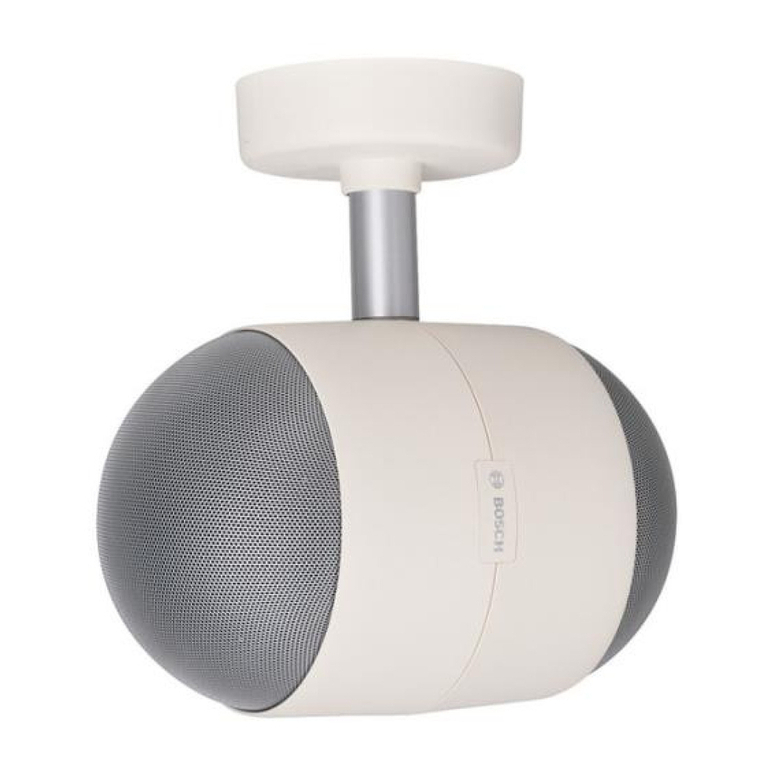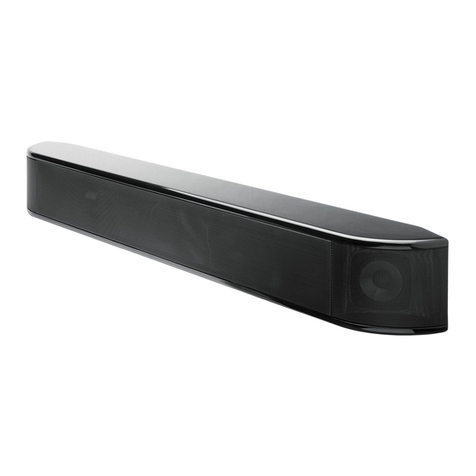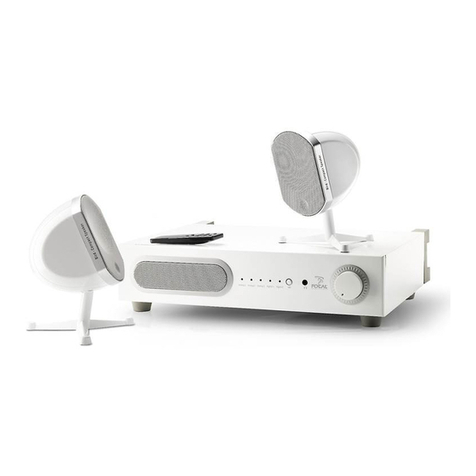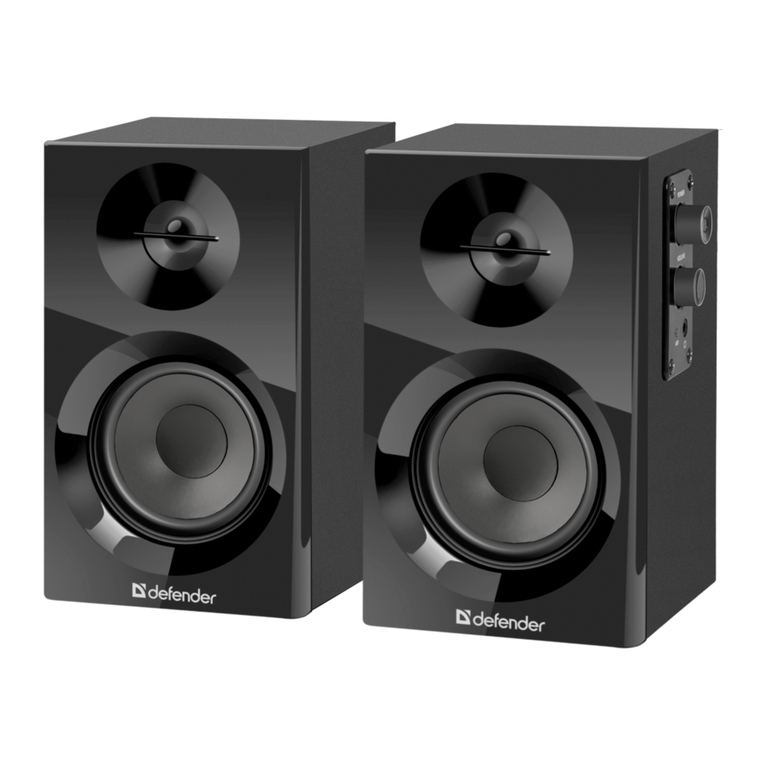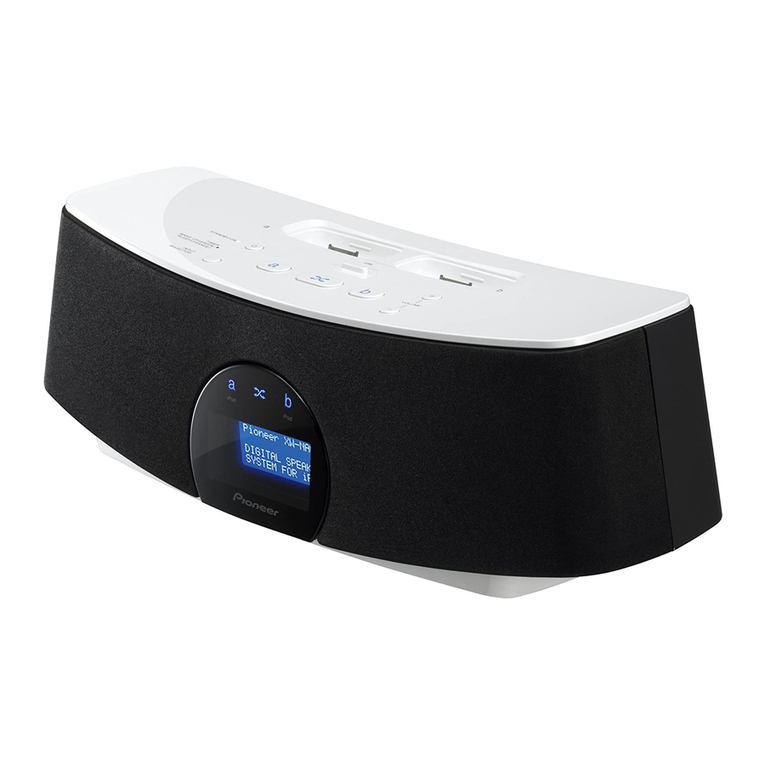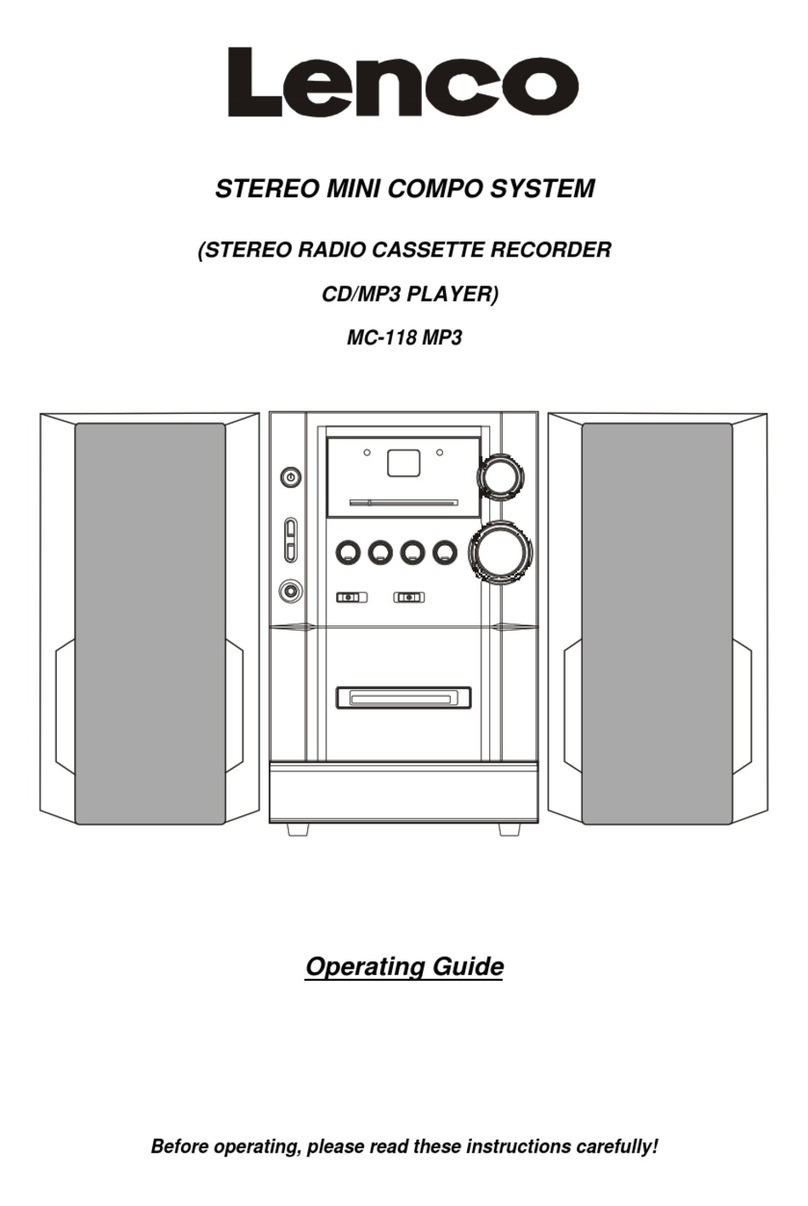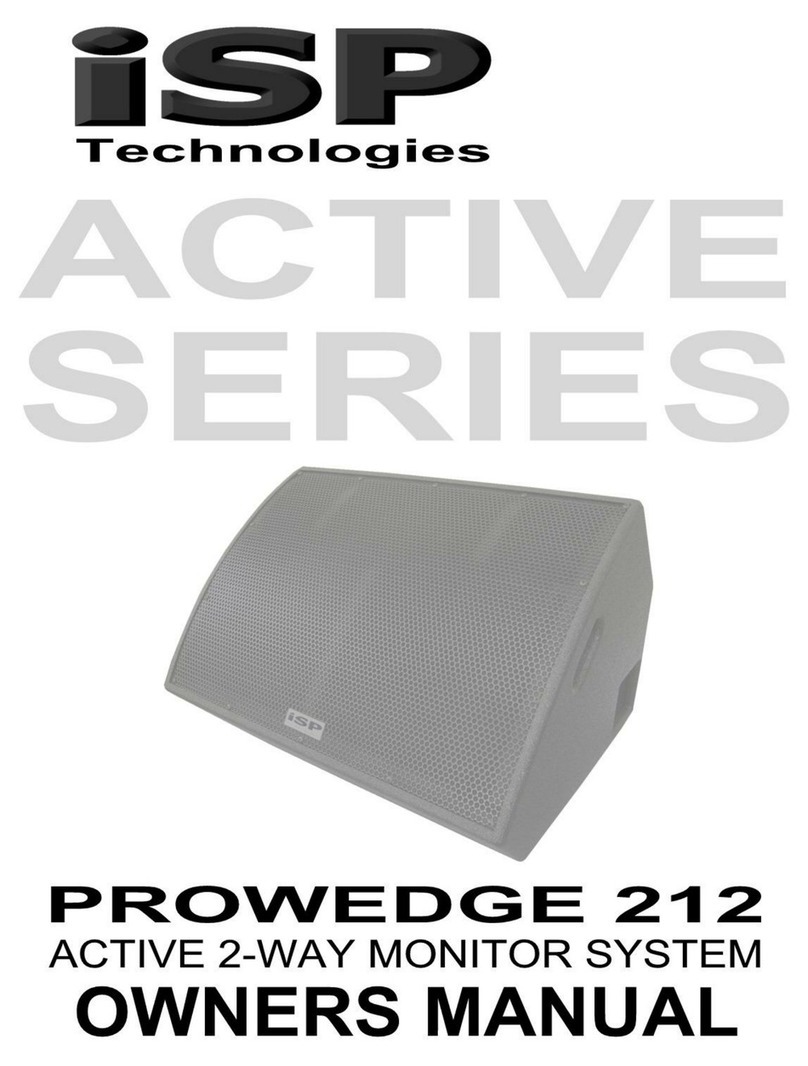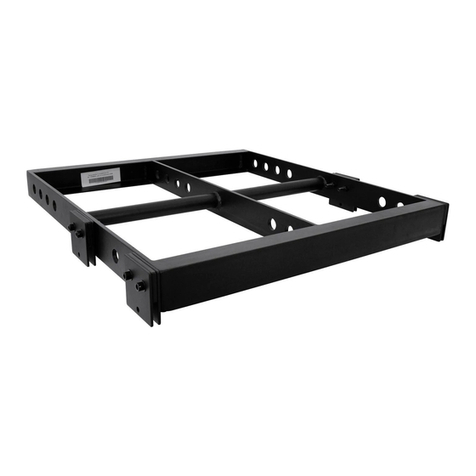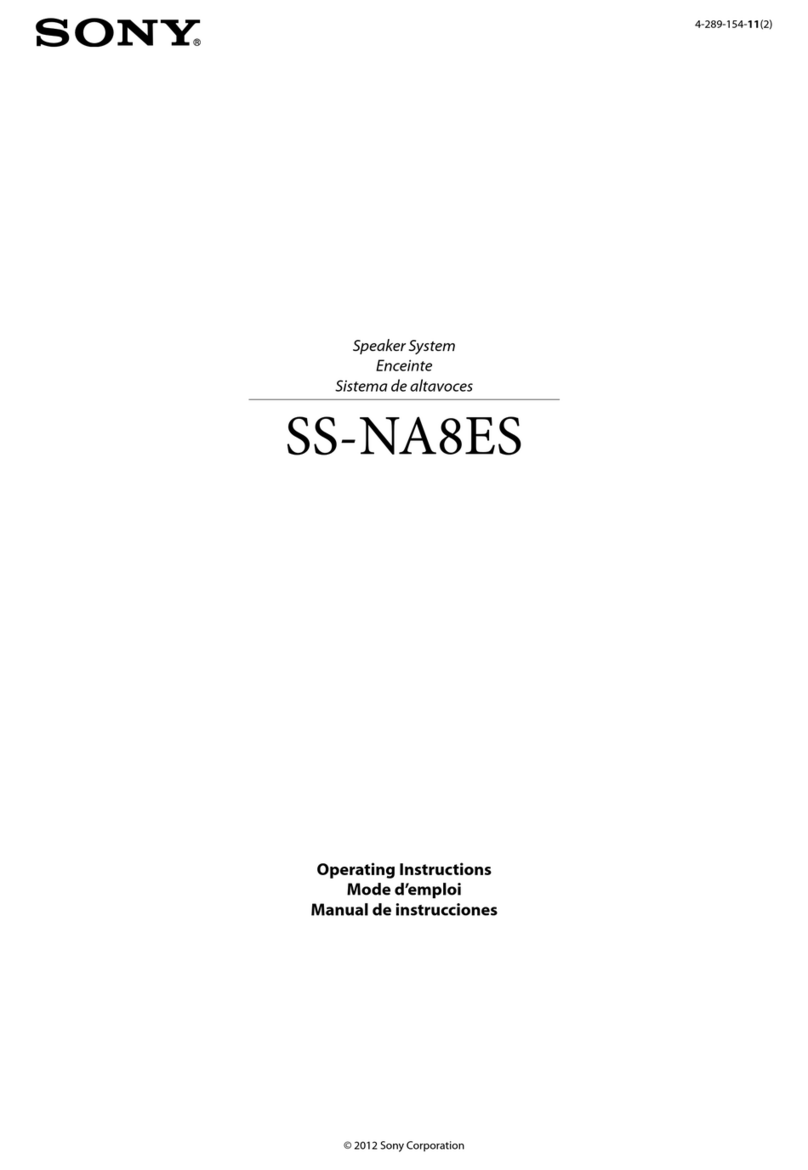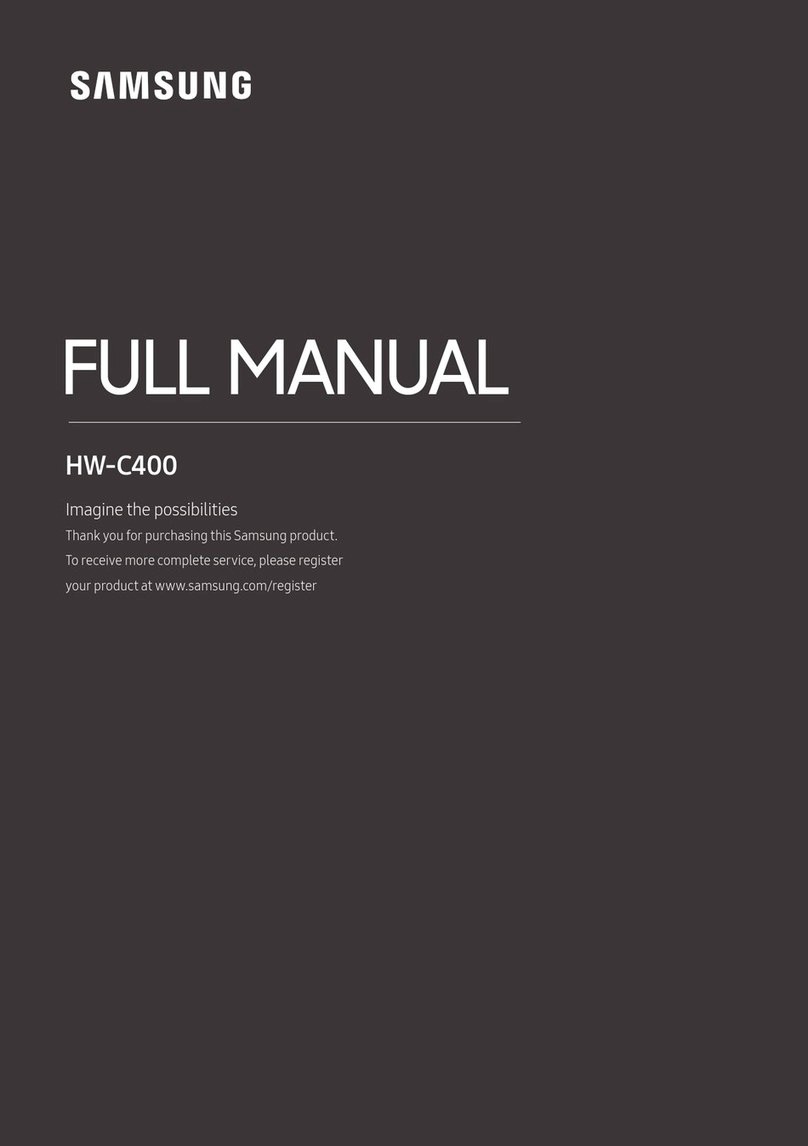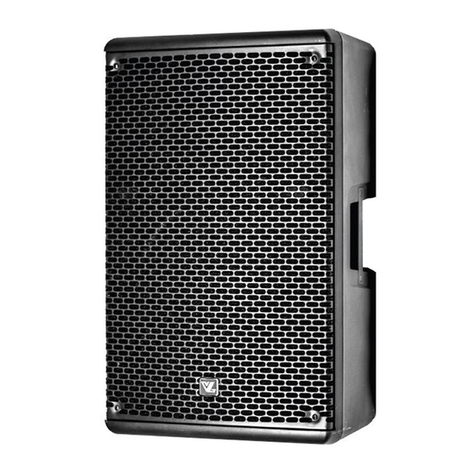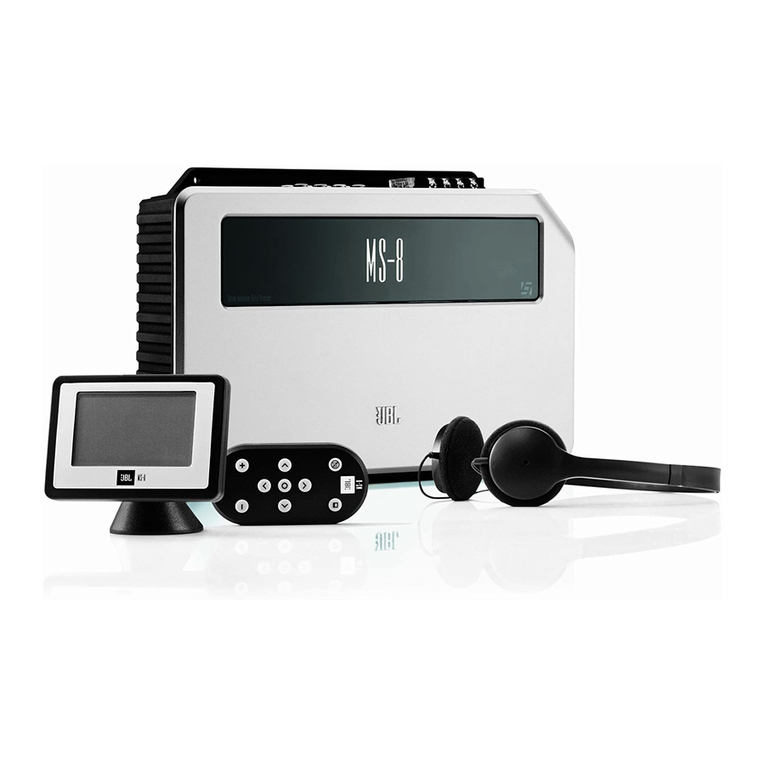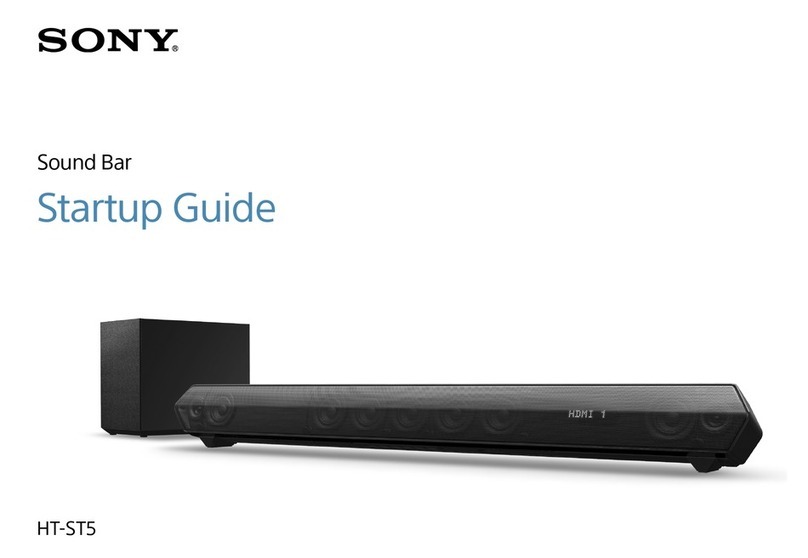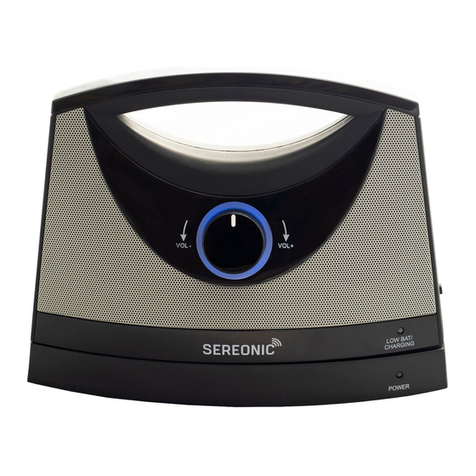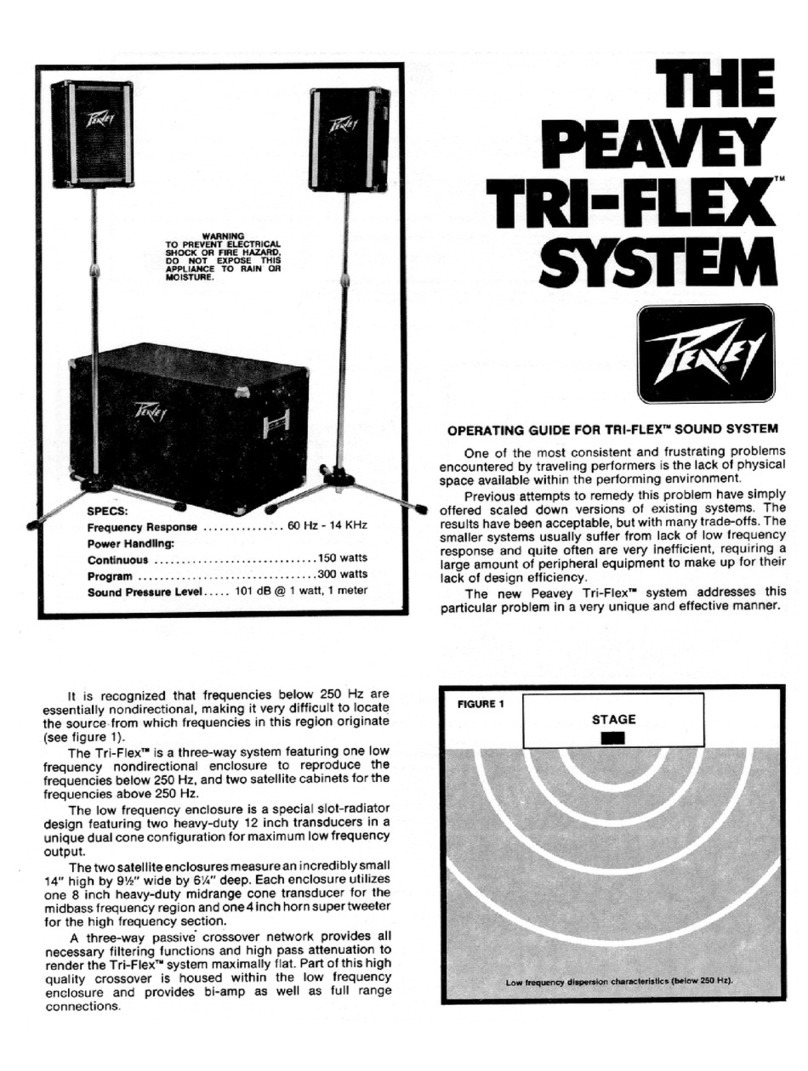The loudspeakers ("elements") that make up a "line-array" must meet a
certain set of conditions for the effects to be coherent and acceptable over
a wide frequency range:
1 - The distance between the acoustic centers of the various elements
must be equal to or lower than half the wavelength corresponding to the
maximum frequency to be reproduced.
This means that an array made with small cabinets fitted with small
loudspeakers may be effective to a higher frequency (it is for this reason
that the PALCOPLUS RA16 loudspeaker is fitted with 8" woofers). This is
true for frequencies that are higher than a critical one, that is a function
of the array length. This means that, in order to correctly generate low-
frequency cylindrical waves, the array must be very long.
2 - The separation between the high frequency radiators (wave-guides)
must be minimal: the wave-guides must be tightly spaced. This is the
reason that the array is assembled by tightly coupling the front of the
loudspeakers. The wave-guides must be of special design, because the
sound waves emitted must be time-coherent: they must generate plane
waves. In this way there is no disruptive interference (figure 3 - A) between
radiation from the separate wave-guides: they generate plane waves that
sum coherently (figure 3 - B).
The theoretical line array should be a straight line, but in many cases this
cannot be done, especially when the array must be flown.
A flown, straight array will not give adequate coverage throughout the
audience area and, in practice, it may be necessary to curve the array in
order to achieve sufficient coverage of the nearest areas.
This result in a J-shaped array, where the upper speakers (in a straight line)
are used for the long-throw coverage and the lower speakers, in a curved
line, are used for the short-throw coverage (figure 4).
Each speaker that makes up the line array must incorporate a rigging
system that allows aiming in the vertical plane.
The rigging system, usually an integral part of the units, allows for hinging
at the front of the box so that the separation between the speakers stays
the same, while the rear plates allow for adjusting the angle between
speakers ("splay" angle).
A software program is used to determine the correct angle between the
various speakers of the array. Starting from the geometry of the venue, the
desired coverage and the number of speakers available, this program will
give the correct splay angle between the speakers and the correct rigging
point. For the PALCOPLUS system we supply the custom EASE FOCUS
software.
1.2 - REPRODUCTION OF LOW FREQUENCIES
For the reasons explained above, a line-array's low frequency reproduction
is limited by the array's length (and by it's components).
Special low frequency units are thus used.
To extend the response to the lowest octaves, the PALCOPLUS system
utilizes a specially designed sub-bass unit, model RAB1815.
It's two low frequency woofers, an 18" and a 15", are acoustically loaded
in different ways, while the geometry of the system and the frequency and
phase correction supplied by the LM24 digital controller or by the digital
controller integrated into the PLM6800 'powered controller' transform it
into a directive low-frequency source, with a cardioid directivity pattern.
The RAB1815, due to it's size and weigh, is not intended to be flown.
Figure 3. Plane waves: coherent
radiation of multiple wave-guides




















